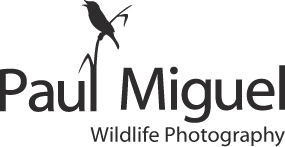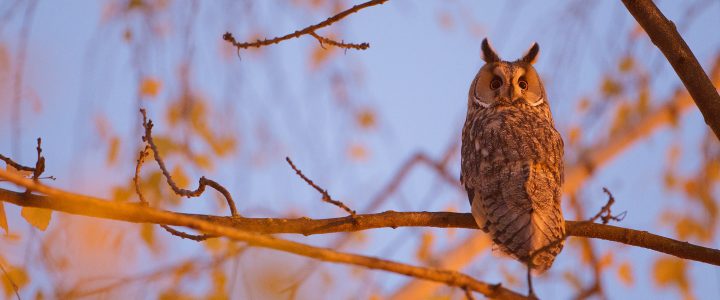It was a few short words in a travel magazine that began it all: my obsession with Long eared Owls. I had never heard of the owl roosts in Serbia, but after researching on the net I decided to try my luck at photographing the Long eared Owl roosts that occur each winter in Serbia.

My first visit was in November 2015. After researching other locations for bird photography I spent my last day in the northern town of Kikinda, famed for its owl roosts. The day was wall to wall sunshine; glorious. At first the owls were barely noticeable, but then I suddenly spotted my first one – perched on a clear branch overlooking a well used path. It’s then that you begin to see what’s really there. As I walked under the trees I could make out another, slightly hidden behind the foliage – and then another, and then… well, when you really start to look you realise there’s actually about six all sat within a few feet of each another! I found one conifer tree and counted around twenty, all sat quietly above me. That day I barely stopped, shooting as much as I could. Most images were taken with a Canon 400mm and a 1.4x extender but sometimes it was possible to shoot with the 400mm alone.



Long eared Owls have been roosting in Kikinda for years – in huge numbers. The surrounding farmlands are perfect for hunting, providing the owls with a high number of voles. With virtually no surrounding trees, the town makes the perfect (and only) roosting site. The streets are lined with both deciduous and evergreen trees, ideal for owls to roost during the day. The added heat of the town also helps the birds to avoid the harsh temperatures of the Serbian winter.



Seeing the owls in such numbers in this fascinating urban habitat had really got under my skin. I just had to go back! February 2016 saw my second visit, but with poor weather it proved to largely a recce trip. I was introduced to two new owl roosts though – both with photographic potential.


It was December 2016 when I made my third visit. Through new Serbian contacts I was granted access to higher floors of buildings; enabling me to get to the same level as the owls! With a spell of settled weather forecast I booked my flight with literally two days notice. This trip was undoubtedly the best so far. It also drew the attention of Serbian TV who Filmed me in Kikinda! During this trip I was able to get to eye level with a number of owls and explore more locations for future visits. Things were looking good..

One of the most exciting aspects was the possibility of capturing images at twilight. This would be virtually impossible had it not been for the nearby street lights. The result was images of Long Eared Owls with twilight skies lit purely by a mixture of natural and artificial light. Magical!


This type of photography sure does test your long lens technique.! The only way to achieve pin sharp results with my newly acquired Canon 500mm lens was to rest a beanbag on top of an empty tripod head. Shutter speeds were insanely slow… and ISOs high. But.. it was possible – and the results… absolutely stunning! I really doubt it’s possible to do this anywhere else on the planet. It truly is unique.



There’s no doubt the Long eared Owl roosts of Serbia are a true spectacle. Watching them sat in the trees peering down at passers by is quite bizarre. Its urban wildlife at its best!
If you’re interested in this unique experience why not book yourself onto one of the Serbian Owl Photography Tours in December. Serbia is a country full of surprises and this surely is one of its best.




